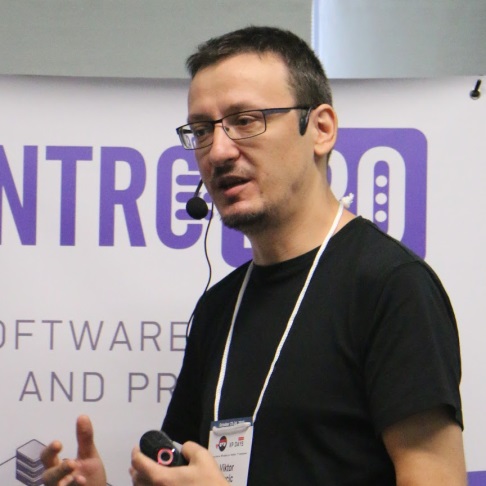
Viktor Farcic is a Senior Consultant at CloudBees, a member of the Docker Captains group, and books author.
He coded using a plethora of languages starting with Pascal (yes, he is old), Basic (before it got Visual prefix), ASP (before it got .Net suffix), C, C++, Perl, Python, ASP.Net, Visual Basic, C#, JavaScript, Java, Scala, etc. He never worked with Fortran. His current favorite is Go.
His big passions are DevOps, Microservices, Continuous Integration, Delivery and Deployment (CI/CD) and Test-Driven Development (TDD).
He published The DevOps 2.0 Toolkit: Automating the Continuous Deployment Pipeline with Containerized Microservices and the Test-Driven Java Development. He is currently working on his third book The DevOps 2.1 Toolkit: Docker Swarm
Many of us have already experimented with Docker - for example, by running one of the pre-built images from Docker Hub. It is possible that your team might have recognized the benefits that Docker provides in building microservices and the advantages the technology could bring to development, testing, integration and, ultimately, production. However, you must create a comprehensive build pipeline before deploying any containers into a live environment. Integrating containers into a CD pipeline is far from easy. Along with the benefits Docker brings, there are challenges both technically and process-related. This presentation attempts to outline the steps you need to take for a fully-automated Jenkins pipeline that continuously builds, tests and deploys microservices into a Docker Swarm cluster.